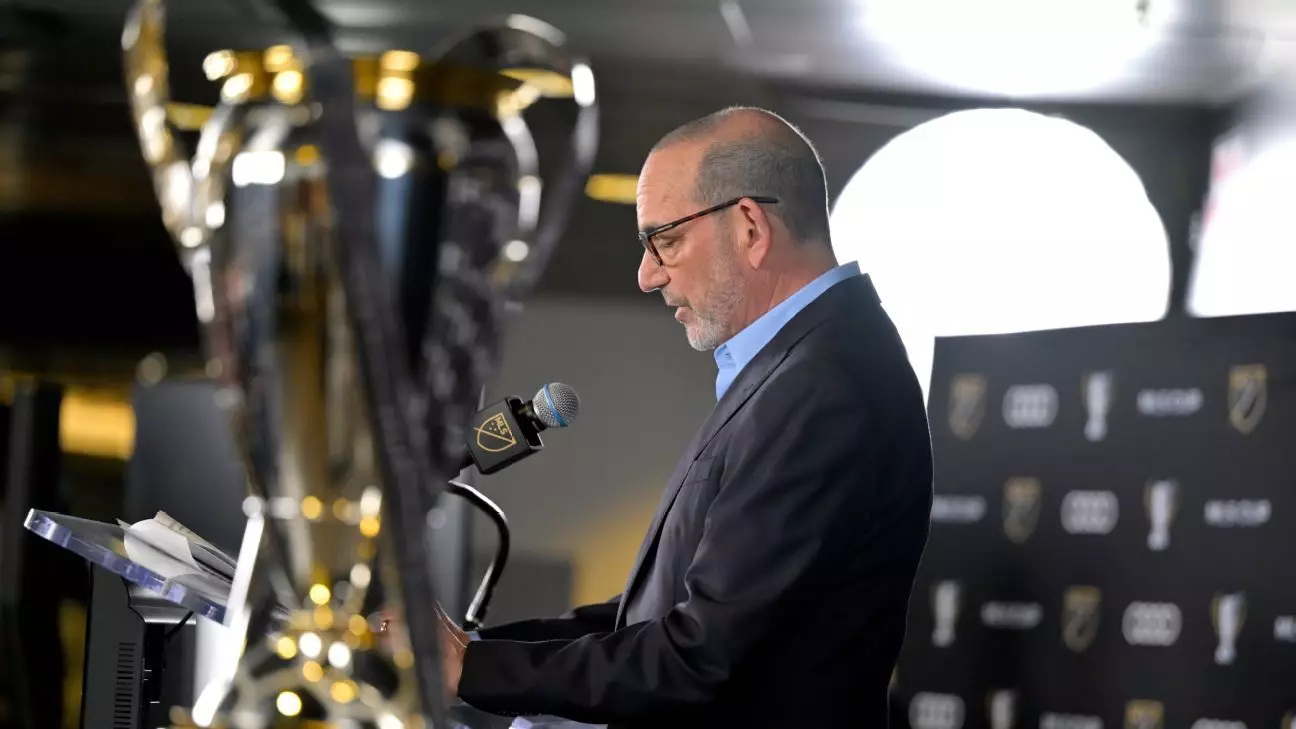In recent years, Major League Soccer (MLS) has found itself navigating a rapidly evolving landscape. According to MLS Commissioner Don Garber, the league is grappling with an increasingly congested competitive calendar. While contemplating a potential shift to align its schedule with European leagues, Garber acknowledged the complexities involved in such a transition. The league’s historical attempts to modify its calendar—first considered in 2004-05, and again in 2014-15—serve as a backdrop to today’s discussions. “We are considering change more seriously now than ever before,” Garber noted. However, until consensus is reached among stakeholders, any transition remains speculative at best.
The current MLS calendar runs from February to December, but various international tournaments are increasingly encroaching upon the summer months, complicating scheduling for both teams and fans. With summer events like the Gold Cup and the Nations League Cup on the horizon, the logistical struggles of fitting in league play alongside national and international games become evident. Reflecting on these challenges, Garber stated, “The summer, particularly June, has become saturated with international tournaments, forcing us to rethink our scheduling strategies.”
MLS’s commitment to an expansive tournament structure—comprising the Leagues Cup, U.S. Open Cup, and even the Club World Cup—adds another layer of scheduling complexity. Garber indicated that teams may need to make tough decisions about which tournaments to enter, suggesting that not every team will participate in every event due to the limited dates available. “It’s nearly impossible for all teams to compete in every tournament,” he said, underscoring the reality of an overly crowded calendar.
Amidst this turmoil, the league has nevertheless seen positive developments, notably the successful participation of LAFC in the U.S. Open Cup. Looking ahead, Garber promised that MLS would prioritize broadening participation in the tournament while ensuring that clubs get the opportunity to compete for trophies—a key aspect of enhancing fan engagement.
A notable highlight from Garber’s address revolved around the restructuring of the Leagues Cup, where he emphasized the need for more matches between MLS and Liga MX teams. By fostering this rivalry, Garber hopes to generate increased enthusiasm and viewership that could benefit both leagues. “We need to capitalize on the passion that exists between our fans,” he remarked.
Moreover, Garber expressed optimism regarding the league’s ongoing growth, pointing out that MLS has become the second-most-attended league globally, boasting 12.1 million fans. This places the MLS ahead of numerous other leagues, especially when considering the number of participating teams; for instance, the English Premier League fields only 20 teams. The upcoming inclusion of San Diego as the league’s 30th team further cements its growth trajectory.
Lionel Messi’s arrival in MLS has undeniably transformed the league’s visibility and popularity. Garber described the phenomenon of Messi’s impact as “more significant than anyone could have anticipated.” The crowds at away games—driven by the Argentine’s presence—have exceeded expectations, showcasing his broad appeal. “Leo is not just a superstar; he’s a genuine champion of our league,” said Garber, further elevating Messi’s status as a transformative figure within American soccer.
Despite Inter Miami’s playoff exit, the hype surrounding Messi has invigorated both fan engagement and media interest. The connection between the player and fans was palpable during various events, reinforcing the idea that marquee athletes can boost league profiles.
Broadcasting and Financial Realities
Garber also provided insights into the league’s broadcasting experiences, especially regarding its partnership with Apple TV. Though he refrained from providing specific viewership metrics, the feedback has been predominantly positive. “We’ve seen an uptick in viewership relative to previous seasons,” Garber observed. However, quantifying success remains a challenge, as the league considers the collective impact of multiple games on any given night rather than focusing on single-game comparisons.
As MLS contemplates further financial investments, especially amid heightened competition for talent, Garber does not foresee drastic changes in player spending. The uniformity of spending across teams remains a focus as well, as the league looks for ways to maximize efficiency and competitiveness without surpassing financial boundaries.
Major League Soccer stands at a pivotal juncture. Garber’s reflections reveal a landscape rich with both challenges and opportunities. With an eye toward the future and a focus on building rivalries, enhancing tournament structures, and capitalizing on international stars, the league appears poised for growth. However, logistical hurdles and financial limitations necessitate careful planning and collaboration. As MLS continues to develop, its ability to adapt to the demands of a busy schedule while nurturing its distinct identity will undoubtedly determine its trajectory moving forward. The path ahead may be challenging, yet the potential rewards of sustained growth and greater visibility are more promising than ever.

